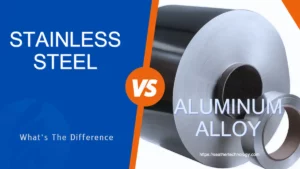Nickel-based alloys and superalloys are divided into different grades according to chemical composition.
These alloys are most widely used in the industry due to their excellent performance, corrosion resistance and high-temperature stability.
Before describing both of these alloys, it is very important to know the difference between them.
The nickel-based alloy has nickel as a basic alloying element.
Nickel plays a very important role in increasing corrosion resistance; therefore, nickel-based alloys have excellent corrosion resistance properties.
Some of these nickel alloys are used at high temperatures; such alloys are called superalloys.
All the nickel-based alloys are not counted in the superalloys category because some nickel alloys only perform well at room temperature.
All the superalloys contain nickel because nickel increases the stability of superalloys at high temperatures.
Superalloys are also divided into three groups according to their base alloying elements: iron-based superalloys, nickel-based superalloys, and cobalt-based superalloys.
Choose According to Operating Temperature
When choosing an alloy, the most important consideration is its operating temperature.
Normal-temperature alloys can be used at high temperatures, but high-temperature alloys are not suitable for use at room temperature. This is the first stage in our testing process.
As we mentioned above, not all nickel alloys are appropriate for high temperatures. All superalloys are actually suitable and perform well at high temperatures.
Different grades of superalloys have distinct characteristics. Some alloys are designed to withstand high temperatures.
Some superalloys also require improved corrosion resistance.
There are two main types of superalloys according to their usage in certain temperature conditions: normal temperature use and high-temperature use.
Normal temperature use
The alloys that fall into the normal temperature category are mostly used at room temperature. Monel alloys are common examples of normal-temperature alloys.
High temperature use
High-temperature alloys are mostly used in extreme environmental conditions. Some of the most widely used types of high-temperature alloys include 800, 800H, 800HT, 840, X, 600, 601, 625.
Choose According to Chemical Environment
Choosing the right material according to the chemical environment is a very important consideration after selecting the material according to the temperature conditions.
Generally, superalloys and nickel-based alloys are corrosion-resistant, but the type of corrosion they can resist is different.
When picking materials, you must first consider the environment in which the material will be used.
Then, based on the environment, select the suitable material.
The chemical environment is commonly divided into two main types: oxidizing environment and reducing environment.
Nickel alloys and superalloys show oxidation resistance and reduction resistance.
Oxidation resistance
The oxidation resistance is higher for those alloys that contain more chromium contents in their composition. Alloy 625, 825, and C-276 exhibit excellent oxidation resistance because they contain high chromium.
Reduction resistance
The reduction resistance is higher for those alloys that contain more molybdenum in their composition. For example, alloy X have higher percentages of molybdenum than other alloys; therefore, they show excellent reduction resistance.
Choose According to Pressure
The pressure is basically a force exerted on the per unit area of any object. It is also an important consideration when choosing the material for any application.
Generally, nickel-based alloys can tolerate limited stress in specific applications, such as container parts.
As a result, considering simply resistance to high temperatures and corrosion resistance is sufficient.
However, some high-strength components (such as aircraft engine blades or steam turbine blades) must withstand high stresses during usage.
As a result, high-pressure strength is a more important factor when choosing the proper material.
According to the alloy’s strength, nickel-based alloys and superalloys are divided into solid solution-strengthened alloys (lower strength and higher toughness) and precipitation-strengthened alloys (high strength and lower toughness).
Lower strength and higher toughness
Single-phase alloys are also known as solid solution-strengthened alloys.
They offer certain strengths but are not enough to be used in many high-stress applications.
Due to their low strength and hardness, these alloys have a higher toughness. As a result, they are mostly employed for housings and container parts.
High strength and lower toughness
Precipitation-strengthened alloys contain one or two additional strengthening stages than solid solution-strengthened alloys.
They are frequently twice as powerful.
Because these alloys have high strength, their toughness is low. When an alloy’s strength or hardness increases, its toughness decreases. As a result, these alloys are ideal for applications requiring great strength.
Strengthening types of some common alloys are shown in the given table:
Type | Alloys |
Solid solution strengthened alloys | 600 Series 800 Series 926 400 Series X |
Precipitate strengthened alloys | 718 900 Series 500 Series C-22HS |
Choose According to Special Needs
Sometimes, you need material for special purposes like high temperature or extreme high-temperature conditions.
For these conditions, you have to select the proper alloy according to the requirements.
If you want the volume of the material is not to increase as the temperature rises, then it is necessary to use a small coefficient of linear expansion alloys for this purpose.
Some linear expansion alloys are shown in the table.
Type | Alloys |
Linear expansion superalloy | 783 903 907 908 909 |
A dispersion-enhanced superalloy is a good choice if you need the alloy to operate effectively at very high temperatures (even though it has limited corrosion resistance).
Some common dispersion-enhanced superalloys are given in the table:
Type | Alloys |
Linear expansion superalloy | MA754 MA758 MA956 |
Choose according to alloy price and cost
Keeping all the above factors in mind, if you have selected the proper alloy for your project, the next important step is to determine its cost.
If the low performance of the material cannot affect your project’s efficiency, then you should use low-priced alloy.
But if your project has specific material requirements, then it becomes necessary for you to use expensive materials.
As mentioned above, there are three basic types of superalloys, and iron-based superalloys are less expensive than others.
Nickel-based alloys are moderately expensive, and cobalt-based superalloys are more expensive than all other alloys.
The price of superalloys depends on their composition. If the costly base element (alloying element) is used in the alloy, it will definitely increase the cost of the alloy.
For example, nickel-based alloys are more expensive than iron-based alloys.
Conclusion
When making decisions about alloy materials, it’s essential to take into account the above five factors.
In many instances, temperature, environment, and pressure are particularly crucial considerations.
If your project involves low expansion, extremely high temperatures, or other unique requirements, there are specialized superalloys worth considering.
Ultimately, strive to opt for materials with the most cost-effective pricing to optimize your budget while still satisfying your requirements.
Once you’ve concluded your material selection, we recommend calculating the specific material costs and proceeding with your purchases.
As the leading nickel based superalloy supplier in China, we invite you to reach out for any inquiries. Our sales expert team is dedicated to providing you with the best service possible.






